The stage is set. The actors primed. At Wimbledon everything has been Championship ready since last Saturday. The grass has been trimmed to precisely 8mm. The flowers are perky and flushed with life. And the food – including 27,887kg of Kent strawberries – is waiting to be plucked, packed and delivered. Now everyone is counting down to the moment that itchy tingle of anticipation morphs into a roar as Andy Murray steps on to Centre Court to defend his title and begin the 131st edition of the greatest tennis tournament in the world.
It seems scarcely believable that the first Wimbledon tournament was held in 1877. Or that it was only held so the All England Club could pay for the repair of the pony roller needed to maintain the lawns. The event attracted 22 players who paid one guinea to enter – and the winner, Spencer Gore, received 12 guineas in prize money and a silver challenge cup. In 2017, the men and women's singles winners will pocket €2.5 million each.
In the intervening 140 years, many of the traditions have stayed largely unaltered. Strawberries, for instance, are synonymous with Wimbledon because the early tournaments coincided with the short summer season. The insistence on predominately white clothes too. Of course its vibe, which describes itself as “tennis in an English country garden”, is still hugely successful. Yet it has also realised that tradition – while important – only gets you so far. And during the past decade or so, Wimbledon has quietly modernised, democratised and been lighter on its feet as it has moved into new markets.
"Wimbledon has reflected the way society has changed," says its chief executive, Richard Lewis. "Every year things are tweaked and hopefully improved. But we respect our heritage. I think sometimes things change too quickly. I don't think Wimbledon has ever been guilty of that."
Lewis's relationship with the All England Club is so deep he might well bleed green and purple. When he was 13 he slept overnight on the pavement with his brother before sprinting to get a standing spot on Centre Court to see Rod Laver dismantle Tony Roche in the 1968 singles final. Nine years' later he was walking on to Centre himself alongside Jimmy Connors, unable to see the umpire's chair because of the steep wall of photographers in front of him. That day Connors was snarling and merciless, and Lewis won only nine games. Still, he remembers the experience fondly and there is a twinkle in his eye as he relives the experience. After spells at the Lawn Tennis Association and Sport England, he became Wimbledon's CEO in April 2012. It is a role he clearly relishes.
“I love the buzz of excitement on the first Monday of the Championships,” he says. “It just builds up throughout the morning. Then, just before the gates open, I do a traditional announcement to staff to remind them that this will be many people’s first experience at Wimbledon – or, on the other hand, that they may have been returning for many years – so we must make it as wonderful as possible for them. And then we are off!”
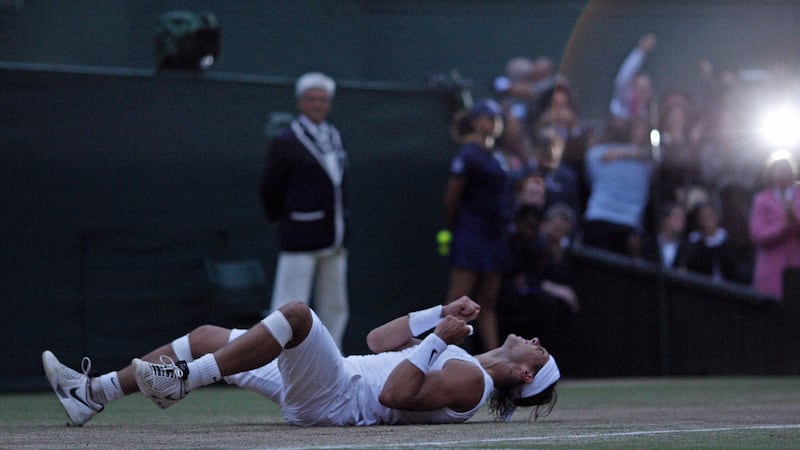
Loosening the mood
Wimbledon has benefited more than most from the frenetic excitement generated by the four kings – Roger Federer, Rafael Nadal, Novak Djokovic and Murray, who in 2013 became the first home winner since Fred Perry, as well as Serena Williams, the finest woman to ever play the game.
Few doubt that the 2008 final between Nadal and Federer, a 4hr and 48min epic of Cecil DeMille proportions, was the greatest match in history. But those things alone do not explain why it has maintained its place as the pre-eminent event of the British summer sporting calendar, while Test cricket and others, have slipped back. Smart decisions by smart people behind the scenes have also loosened the mood, and made it less stiff and starched. You only have to mingle in the huge crowds on Henman Hill, happily pecking on picnics, to realise Wimbledon is attracting a younger and more diverse audience.
It wasn't always thus. The first day's play on a middle Sunday in Wimbledon's history, in 1991, was immediately dubbed "People's Sunday" – which rather suggests the rest of the time was not as inclusive. Patrick Collins, one of Britain's finest post-war sportswriters, even boycotted the Championships for 13 years because he felt "those running the tournament believed that the public was lucky to be there".
Many will recognise his description of that Wimbledon in the mid- to late-90s that he gives in his book, Among the Fans. To Collins it was "a place in which fawning deference mingled with simple silliness, where minor royals outranked major sporting talents, and where the audience giggled fit to burst whenever they heard the cry 'Come on Tim!'"
Yet when Collins finally returned, he found the place had transformed – with “deference in retreat”, a much finer appreciation from the audience of a game played to a staggering standard, and with the public regarded “as guests rather than interlopers”. As he put it: “As one who rejected it for too many years, I sense I may owe it an apology.”
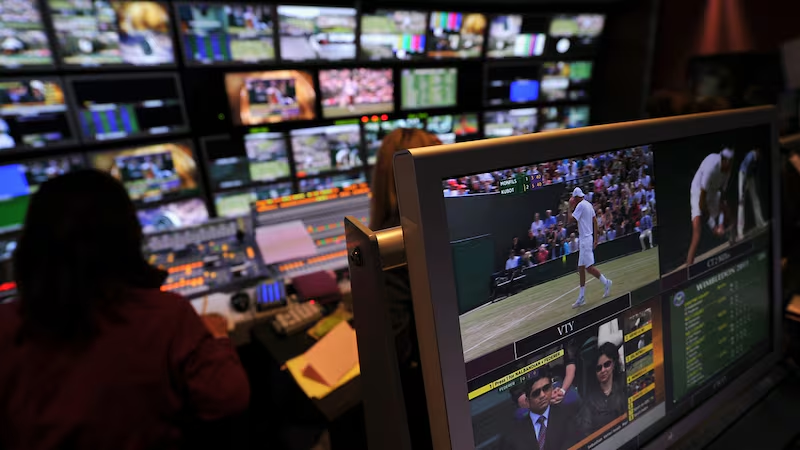
Big decisions
Crucially Wimbledon appears to have got most of the big decisions right. When Test cricket and the Open golf went to Sky they became richer but also more peripheral. But the All England Club stayed loyal to the BBC and together they have mutually benefited.
“Our relationship with the BBC has been fundamental,” says Lewis. “They have done a fantastic job for us. I think we’re good for the BBC too, they would agree with that, I know. It’s a partnership where it’s a classic win-win. It’s really good for us, it’s really good for them.”
The extent of that relationship with the BBC becomes clearer on a visit to the Wimbledon museum, where a special exhibition to mark the 90th anniversary together is under way. The first radio broadcast came in 1927, with commentary provided by the splendidly named Captain Henry Blythe Thornhill (Teddy) Wakelam. TV arrived in 1937, with a match between Bunny Austin and George Rogers, before broadcasting in colour 30 years later.
There were also some eyebrows raised when Wimbledon announced it was going to build a roof for Centre Court at a rumoured cost of £80 million. But the passing of time – and numerous rain delays since it was first used in 2009 – have shown it to be a success. By 2019, when the new No 1 Court roof is finished, roughly two-thirds of spectators will be able to watch live play, even on days when the rain is pelting down .
In the early 2000s Wimbledon made perhaps its bravest decision of all: to slow down the surface. Grass has always tilted the balance towards the attacking player, but the arrival of increasingly lighter and more powerful rackets meant that the men’s game at Wimbledon became too fast and furious, with four-shot rallies increasingly a precarious commodity between big servers. Sometimes it felt the tennis had too much heavy metal and not enough soul. Now, though, the balance has tilted back.
“Nowadays it’s not so different that it’s unfair,” says Lewis. “I think it’s now a wonderful surface to play on. I can remember times when the ball was bouncing very low and there were groups of players who just didn’t like playing on those courts, they hated it.”
That is certainly true – in the early 1960s the Spanish player Manuel Santana announced that grass was for cows – a phrase the 1966 champion could have earned significant royalties on given his comments were subsequently echoed by large numbers of clay-court specialists. "I don't think anyone says that any more, "says Lewis. "The speed, firmness and the bounce of the courts make them a truly fantastic surface to play on."
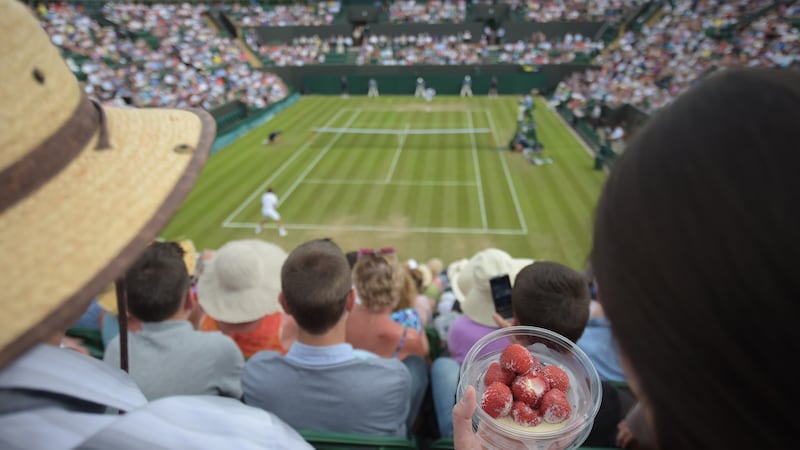
Little decisions
But while these major decisions have made the headlines, getting the thousands of smaller ones right is even more important. And for the All England Club this comes down to maintaining what it calls “the list” – a comprehensive tally of everything the public, players and staff suggest they can do better.
"It comes from our absolute obsessiveness – there's no other word for it – to get everything right, to track things and to listen to people," says the Championship director, Sarah Clarke. "We'll probably have over a thousand items on that list which can range from very specific – something like a chair on court 18 squeaking a little – to someone saying 'I'm not sure you have enough food for vegans'."
The process starts almost immediately after a tournament has finished – with every item on the list having to be discussed and addressed before the next Championships. “First of all we say to each part of the organisation: ‘Can you send us a report before the end of July, telling us everything that went well, everything that you think could go better, any observations about any other aspects,’” says Clarke. “Then, once people are back from their holidays, we work through it.”
This all might sound a little too precise. Perhaps even pernickety. But given the extraordinary logistics in arranging the tournament there is no room for waffly thinking. Around 6,000 staff need to be taken on for Championships, including 250 ball-kids, and 360 umpires and line officials.
But the biggest logistical challenge Wimbledon faces is feeding 500,000 people over a 13-day period. As the catering manager Anthony Davis explains, this makes it Europe's largest annual catering event. And while staff are trained beforehand, the dummy run comes only on the Sunday before the Championships. "That's when they play with the tills and cook the food and make sure that we don't have first-day blues," Davis adds. "There's no opportunity for error. We have 50 weeks to make sure that it's planned perfectly for delivery on those two weeks."
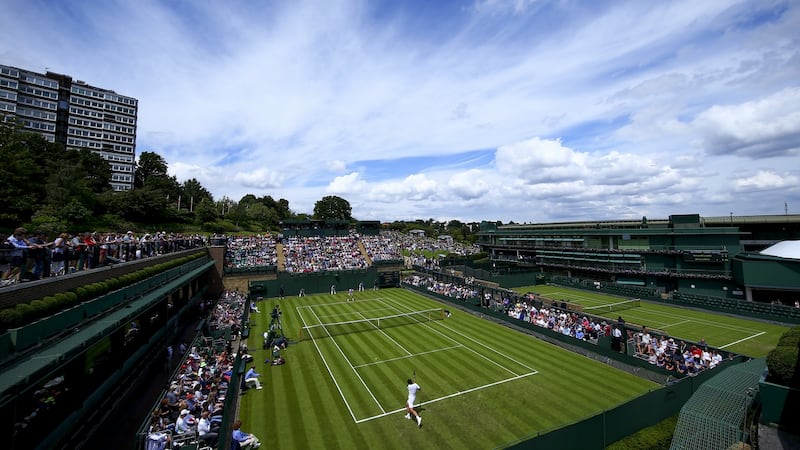
Wooing China
Not that Wimbledon is resting on its laurels. James Ralley, its head of commercial and marketing, says that the brand has long been regarded as a mark of quality. "And that's very much how our partners see the relationship," he says. "Of course it works two ways. We like to always go with the best in class."
But Wimbledon also appears to recognise that success in the modern world means reaching beyond their traditional audiences in Britain and the US – and attracting more young people to watch. “This is an event that is all about tradition and heritage and they’re really important things for us,” he says. “But how do we make those values come to life for everybody? Tradition and heritage probably don’t resonate too much with your average 21-year-old.
“The same is true in emerging markets,” he says. “People understand that Wimbledon is an important tennis event but they don’t know much more. So we are trying to change that.” Last year it launched a campaign – In Pursuit of Greatness – to bring Wimbledon’s traditions to life, from the way the grass is grown to flowers, strawberries and the ballboys and ballgirls.
Social media is an increasingly important weapon – and one that Wimbledon has embraced wholeheartedly. As well as highly popular Facebook, YouTube and Twitter accounts, it uses Pinterest for Wimbledon food and Snapchat for live stories from those inside the grounds. There are bespoke social media feeds in Chinese, which have 65,000 followers, and a tennis game into the popular Chinese WeChat app. "In China most of our fans follow Wimbledon on their phones, and aren't necessarily sitting down to an appointment to view. Instead they'll snack on it," Ralley adds. "We have to create content that works for them and so do our broadcasters."
As Alexandra Willis, Wimbledon's head of communications, content and digital, explains, such projects enable it to show its youthful and progressive side. "We want to demonstrate we can achieve this strange juxtaposition of tradition and innovation, and that we're not an organisation that is comfortable just always being the way we've always been," she says. "Because we recognise that we can't do that in the future. And actually there is some brilliant things about this place that it's really appropriate to bring in some humour."
The digital strategy appears to be working, with Wimbledon expanding its digital audience from 12 million to 21 million during the tournament – a figure that makes it the biggest of the tennis Grand Slams by a distance
“It must look like Wimbledon, it must be a beautiful experience, but we’ve also embraced the way the technology has changed,” Willis says. “I was a bit nervous beforehand about how many of our visitors use Snapchat but it has helped us reach a totally different age and demographic – particularly in the US. Because a Snapchat story of 30 seconds can be watched by over 600 million people. The power of being in different places is something we’re very aware of.”
Wimbledon is also using technology in other ways. From this year it will use an artificial intelligence system that is able to automate highlights packages by picking up key moments of the match based on crowd noise and set and break points. The result is followers of the tournament will get video context far quicker after a match finishes.
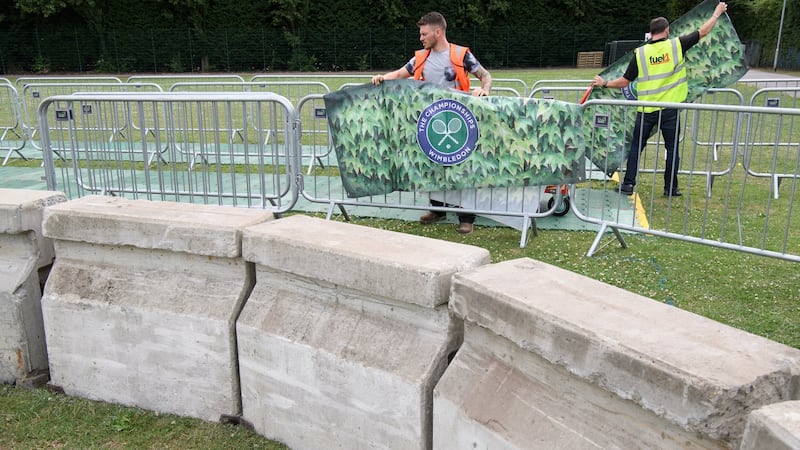
Playing to the gallery
Despite Wimbledon’s many successes, some questions and criticisms refuse to go away – particularly over whether Wimbledon gives top male players more exposure than female equivalents. Lewis insists that Wimbledon is always scrupulously fair, but acknowledges the big four era has led to some difficult decisions. “If we talk about the marquee matches, we are in this extraordinary period where from a safety point of view it would be quite difficult to put those four men on the outside courts,” he says.
“But that dynamic could easily change. Last year we achieved 50 per cent men’s and women’s matches on Centre and No 1. Often the fourth match of the day came on as a ladies’ singles because it’s easy to schedule, you can put them on at 7pm.
“A lot of it depends, ironically, where different players come out in the draw,” he continues. “Because three years ago several of the men’s leading players were in the same half because of the way they were seeded. And so it was heavily weighted one day towards the men and easy to showcase the ladies’ singles the other day. Some people thought: ‘Ah, Wimbledon’s changed its policy’. But Wimbledon hasn’t changed its policy, it’s just where the best match is, and we’ll do what we believe is right.”
Lewis illustrates his argument further. "I always say if Serena and Heather Watson ever come out of the draw against each other, that's the match," he says. "Let's have a replay of what we saw two years ago. Eugenie Bouchard versus Maria Sharapova, too. I'm not saying the atmosphere between players like that is necessarily a good thing. But rivalries build up and they become marquee matches very, very quickly. And we don't care whether it's men's singles or ladies' singles, we put them on."
Might the solution be starting play earlier on Centre and No 1 Court – say midday rather than 1pm – so there can always be two men’s and women’s matches on each day? Lewis looks doubtful. “It is talked about and reviewed,” he says. “But while it’s one of those things that looks very simple, it isn’t easy. We believe in full stands, it’s one of our USPs [unique selling points], and it’s part of Wimbledon’s atmosphere. And we’re very proud of that. We’re not convinced that starting earlier would work well for Centre and No 1 Court. And that applies to the public – not just hospitality. We’ve seen times where we’ve had to start play earlier and it’s an issue.”
Really? He nods. “We can analyse the seats, we know exactly who sits in each seat, and we can look at who has got there in time for the start of play and who hasn’t.”
Lewis is slightly more guarded when asked why the Lawn Tennis Association, which Wimbledon helps fund, has not been able to bring through more successful British players. Rex Bellamy, the eminent former lawn tennis correspondent of the Times once observed: "We know how to make money out of tennis players. If only we could make tennis players out of money" – and little appears to have changed given Murray and Jo Konta emerged from outside the system.
Does he really think that Wimbledon is getting a good return on its investment? “Well, we have our role to play, which is to stage the Championships,” he says. “And being a governing body of the sport is not an easy role. But we are very comfortable with what we do, and the way the LTA invest our money.”
Lewis is understandably a little vague on how security will alter given the recent spate of terror attacks in Britain but confirms that Wimbledon will be beefed up compared to previous years.
“There probably will be one or two visible changes around the park and the queue,” he admits. “I can’t go into detail but we always enhance our security every year based on the latest information and tactics. It’s something that has been high on our agenda for many years. It’s the world in which we live in at the moment, unfortunately. It’s not new but it’s getting more and more prevalent.”
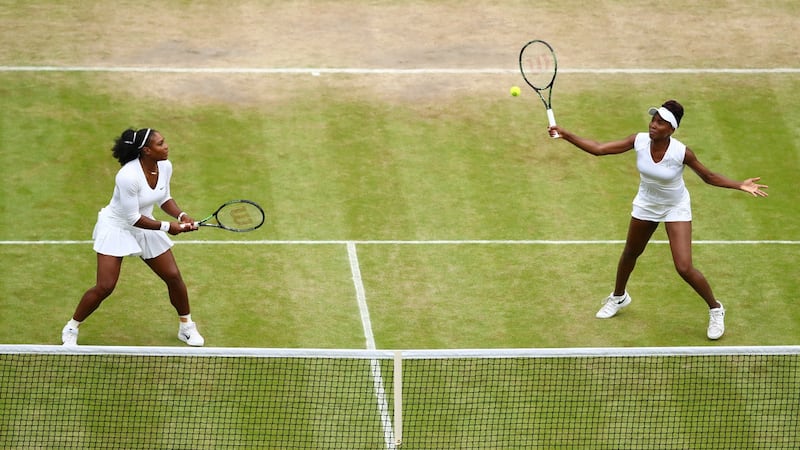
Trouble ahead?
Lewis is keen to stress Wimbledon is not just a two-week tournament, and is proud of the fact it has a 60-year history of raising money for charities through recycling tickets and reselling tennis balls. As he points out, since 2013 they have stepped up their efforts further with the launch of the Wimbledon Foundation, which has awarded £700,000 (€800,000) grants and donations to 96 organisations, many of them in the local London boroughs of Merton and Wandsworth.
Among the projects that have been funded are one-to-one counselling support for vulnerable women who have suffered domestic violence, and another that focuses on helping children aged 10-11 who are coping with trauma and difficult family circumstances. And as Helen Parker, Wimbledon's Foundation and Community manager, explains, they have ambitious expansion plans. "We try to help organisations that make a real difference to the lives of local people. But we also look internationally. For instance, we work with Magic Bus, a leading children's charity that mentors children and parents from underprivileged backgrounds in India. "
But ultimately Lewis knows Wimbledon is judged on the excitement and drama it provides over the two weeks.
After five years in charge at the All England Club, Lewis sees the game and Wimbledon in the rudest of health – particularly with the No 1 Court’s roof on its way. Yet does he worry about bumpier times ahead when the top four of the men’s game, as well as the Williams sisters, retire?
“I’m sure there’ll be one or two years where the build-up will be: ‘Oh, we’ve no longer got Serena and Venus, or Roger and Rafa,’” he says. “But the reality is I’ve seen this happen before. Everyone says: ‘Oh, it’s the end of this era, it will never be the same again.’ But then fresh stars are born, and a different dynamic emerges.
“We protect against any downsides by trying to make it a great event, one people always look forward to. And, most of all, by making sure the tennis is centre stage. It’s all about the tennis and the great players we have.
“Yes we are in a fantastic era – there’s no question about that, but I just think that tennis will go from strength to strength. And I sincerely believe and hope the same applies to Wimbledon.”
(Guardian service)











